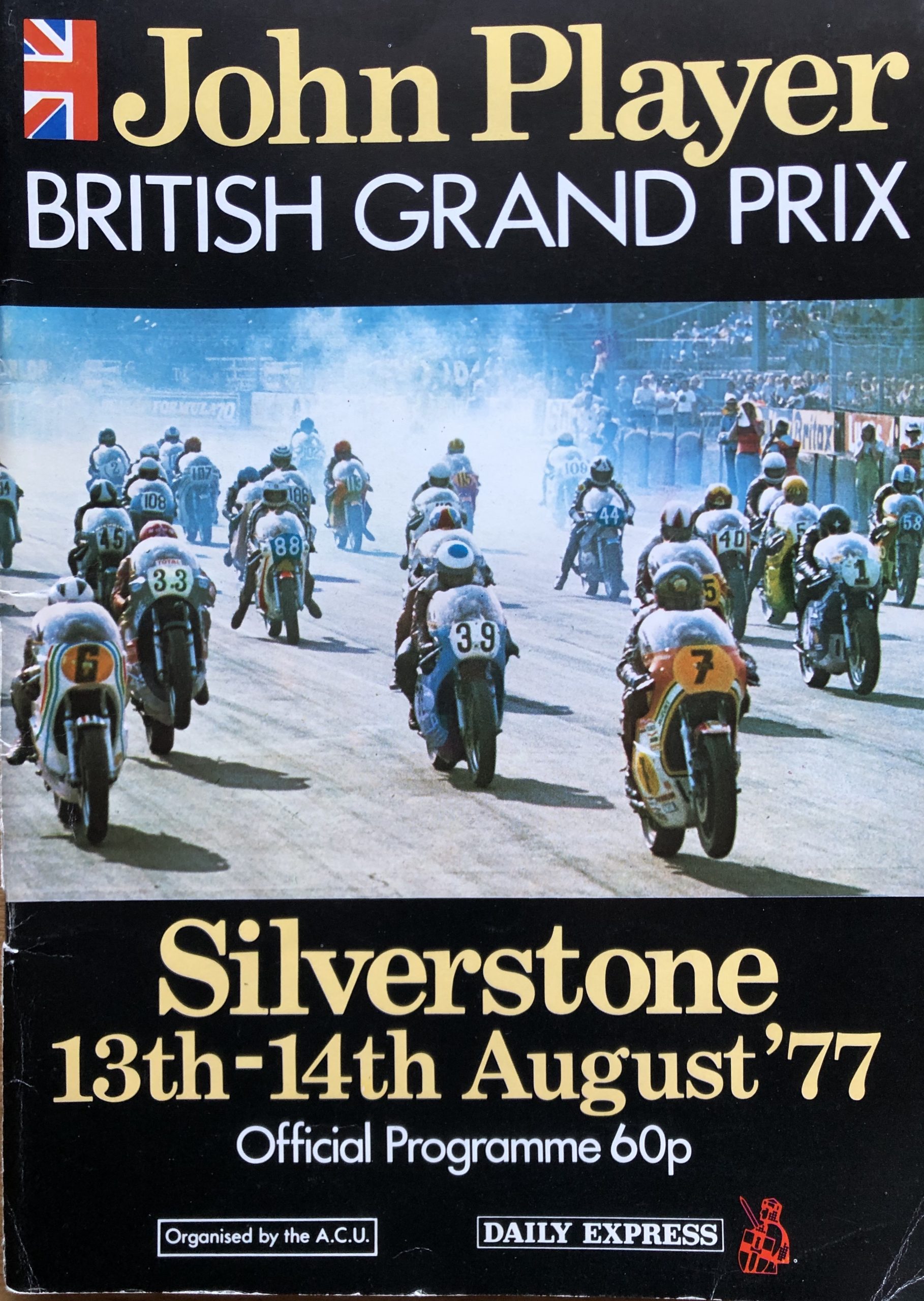August 14, 1977, was not only a historic day for British Motorsport but for the future of Grand Prix motorcycle racing. It was the day that the very first two-wheeled Grand Prix was held on the British mainland. It was a day that heralded the start of a revolution that other circuits and counties followed. It was a day that those legendary road circuits that had been the very backbone of the pioneering days of the World Championship started to be replaced by purpose-built safer circuits as speeds and lap times increased rapidly.
The former second world war aerodrome hosted that first mainland Grand Prix 28 years after the very first World Championship event was held on the 60.721km TT mountain circuit on the Isle of Man in 1949. Silverstone had staged the first ever Formula One car Grand Prix in 1950 and had hosted some big international motorcycle events. The TT Mountain circuit was the spiritual home of World Championship motorcycle racing, but the writing was on the wall in the early seventies. Many of the top riders including World Champions Giacomo Agostini, Phil Read and Rodney Gould boycotted the event on safety grounds. The Spanish Federation banned any of their riders competing following the death of Santiago Herrero.
It was time to change if the sport was to progress. Silverstone led the way, but others soon followed. The parkland Montjuic Park circuit overlooking the city of Barcelona staged its last Spanish Grand Prix in 1976. Grand Prix motorcycle racing returned to this motorcycle mad city with the opening of the brand-new purpose-built Barcelona – Catalunya circuit to celebrate the Olympic games in 1992. The legendary Nürburgring road circuit nestling in the German Eifel mountains had staged Grand Prix racing since 1955 but 25 years later Marco Lucchinelli won the last 500cc Grand Prix at the Ring. Four years later Grand Prix racing returned at a new purpose-built track alongside the old 22.835 kms road circuit. Brno in Czechoslovakia, the Sachsenring in Germany and Rijeka in Yugoslavia also built new circuits to replace their road tracks.
Other circuits made drastic changes to safety to stay on the calendar. In 1977 Barry Sheene set the fastest ever average race speed of 217.37 km/h winning the Belgian Grand Prix at the 14.12 km Spa Francorchamps circuit in Belgium. Two years later the track length was dramatically reduced to 6.95 km taking out sections regarded too dangerous for Grand Prix motorcycles. Sadly, in the end the magnificent venue was deemed too dangerous staging its last Grand Prix in 1990.
A British rider has never won the premier class race at his mainland Grand Prix. Their best chance came at that very first race in 1977. Barry Sheene had brought the sport onto the front pages with his two World 500cc titles and exploits off the track. Unfortunately, he was sidelined with mechanical problems in that first 500cc Grand Prix, but his best friend Steve Parrish led the way with a few laps remaining. Sheene held out the legendary pit board ‘GAS IT W*****’ as Parrish raced towards Copse corner. It had just started to drizzle. Parrish smiled at Barry’s encouragement, lost the front end of the Suzuki, and went down accompanied by the groans of the patriotic crowd. All was not lost with John Williams taking over at the front only to crash three bends later. American Pat Hennen grabbed his chance to win his second Grand Prix. The Union Jack flag and National Anthem tape were quickly replaced and have never returned.
Fans of my generation have wonderful memories, perhaps through rose-tinted spectacles, of those old road circuits but for the sport not only to survive and also progress, those changes were vital. Some such as the TT races in the Isle of Man have successfully survived without World Championship status. Top speeds and lap times continue to increase every season. It is what Grand Prix racing is all about. I wonder what innovations will have to be made to continue progress in the next decade.


